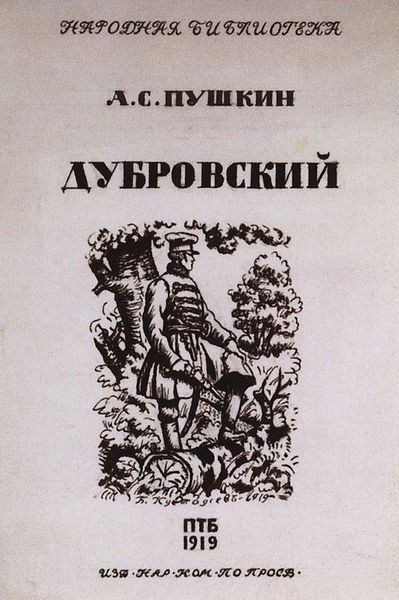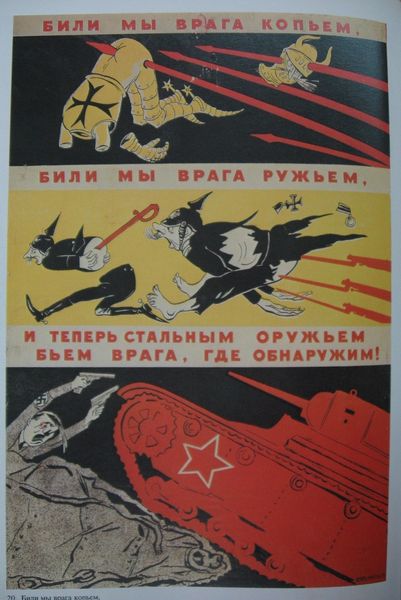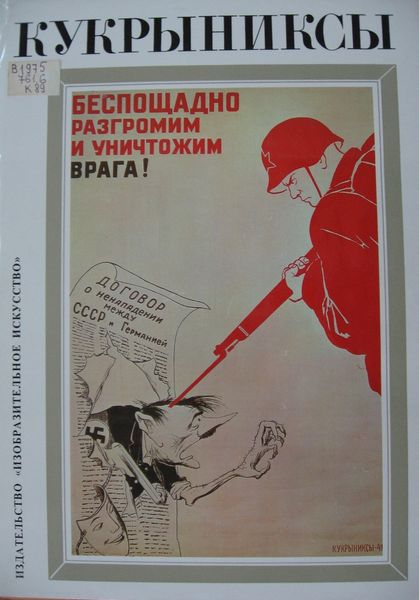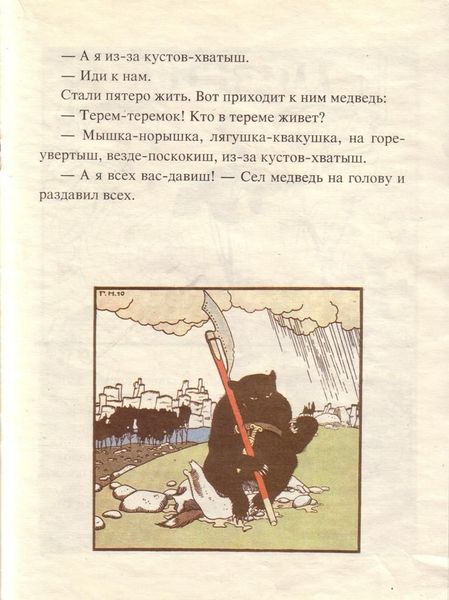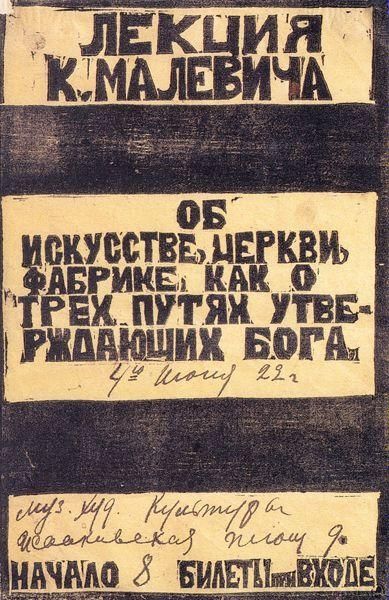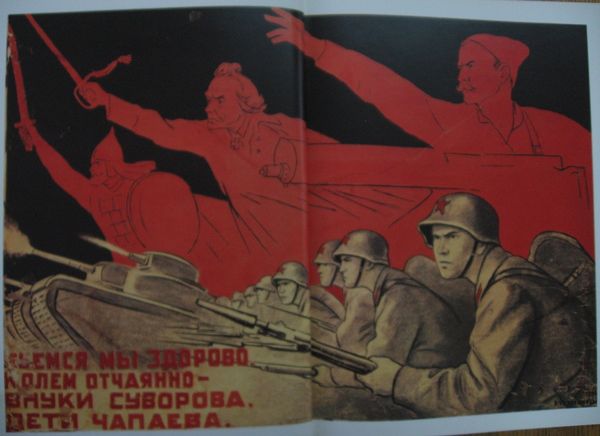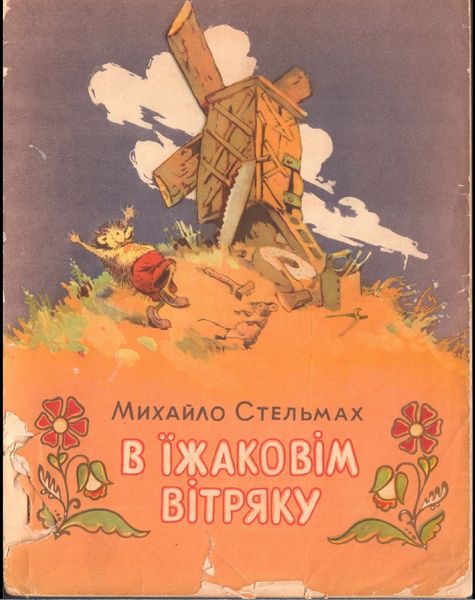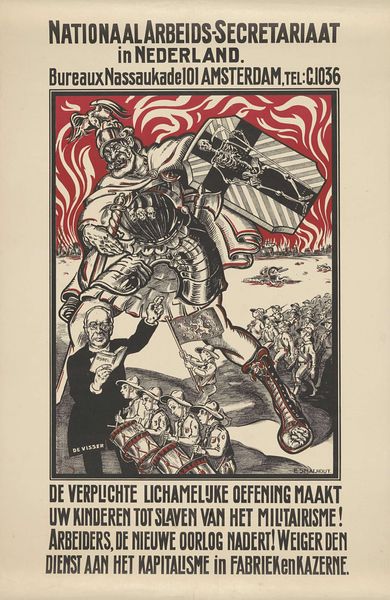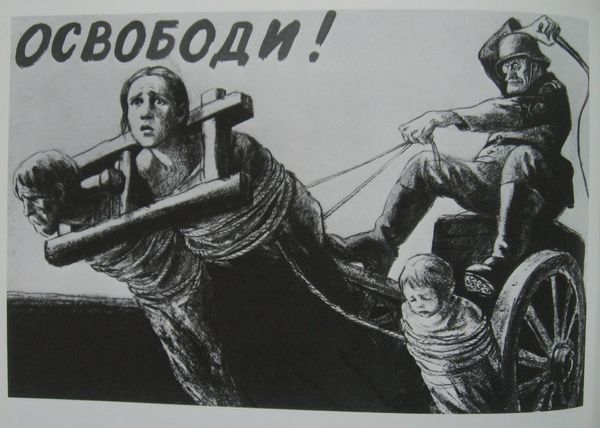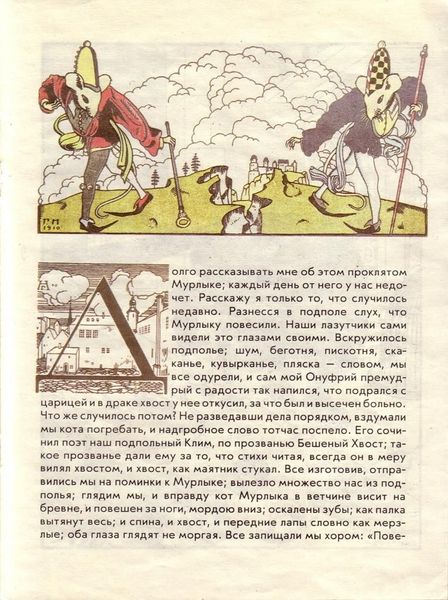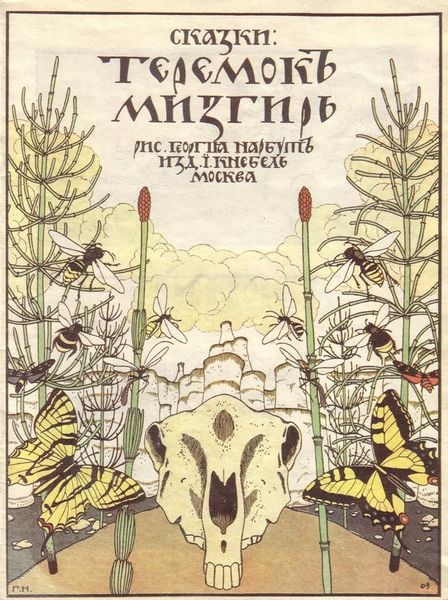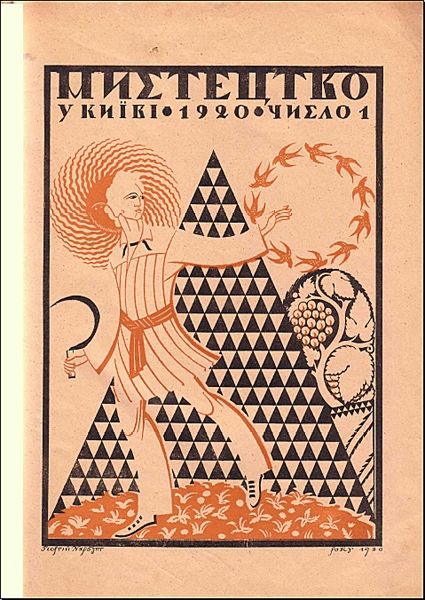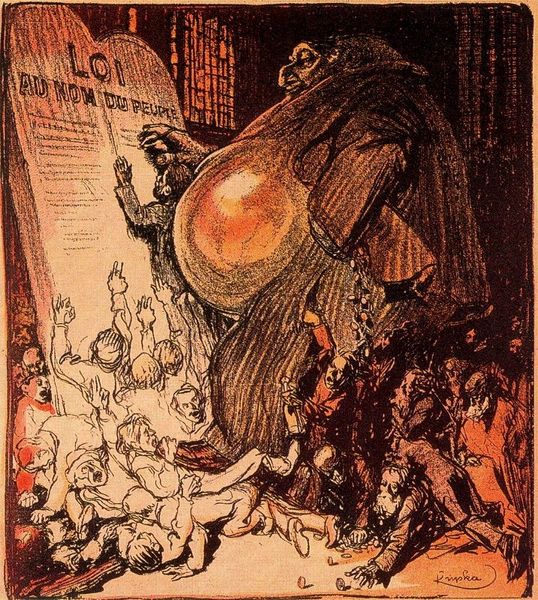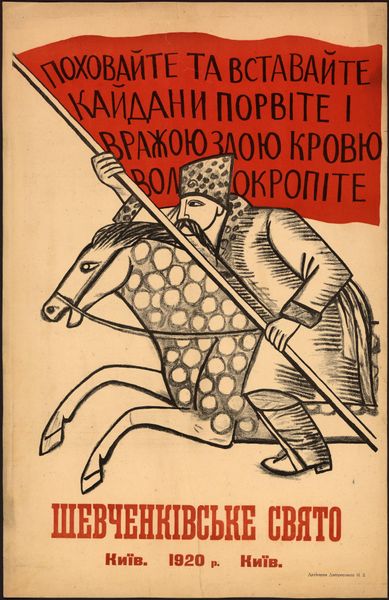
drawing, graphic-art, ink, poster
#
drawing
#
graphic-art
#
pen drawing
#
pen illustration
#
pen sketch
#
text
#
ink
#
geometric
#
russian-avant-garde
#
poster
Copyright: Public domain
Curator: This ink drawing, "Alexei Tolstoy. The Adventures of Nevzorov, or IBIKUS", dates back to 1925. It seems to be cover art. The artist is Boris Kustodiev. The composition is striking. What do you make of it? Editor: Visually chaotic, isn't it? Yet there's a bizarre charm in the ordered mayhem, using what looks to me like layered sketches. The light and dark contrasts are stark; the medium must be well suited to high-contrast imagery. Curator: Kustodiev likely intended such layered depth. These graphic illustrations made for mass production reflect Russia’s shifting economic and political landscapes. Consider the printing press: the material foundation for circulating these images widely to shape public thought. Editor: Absolutely, it does command the eye, it guides your gaze from the running man at the lower left all the way up. I would also suggest paying attention to the clever deployment of geometric forms, with all sorts of connotations of course, given the circumstances. Curator: Geometry is also essential, providing structural strength and lending precision. What about the imagery itself: card-playing villain, the minarets...these illustrations served not only to capture the feel of Tolstoy's text, but shaped public discourse in the early Soviet era. Editor: Certainly! The stark juxtaposition of images—minarets and battle scenes, playing cards and chaos—evokes a world turned upside down. Curator: Precisely! Kustodiev expertly employs symbolism, but he is also making pointed statements about cultural clashes. And of course, that affects labor for poster production itself. Editor: On closer inspection, I notice a constant interplay between linear and textural elements, generating tension and an intriguing sense of motion throughout the work. Kustodiev directs us along the action as if we are a witness. Curator: Indeed, his visual rhetoric underscores historical turbulence as it captures early 20th century Russia grappling with profound transitions, doesn’t it? The medium became inseparable from messaging, I believe. Editor: I agree, seeing how expertly those messages and the text come through only reinforces how lasting the artwork is overall. It goes beyond what is being promoted.
Comments
No comments
Be the first to comment and join the conversation on the ultimate creative platform.
